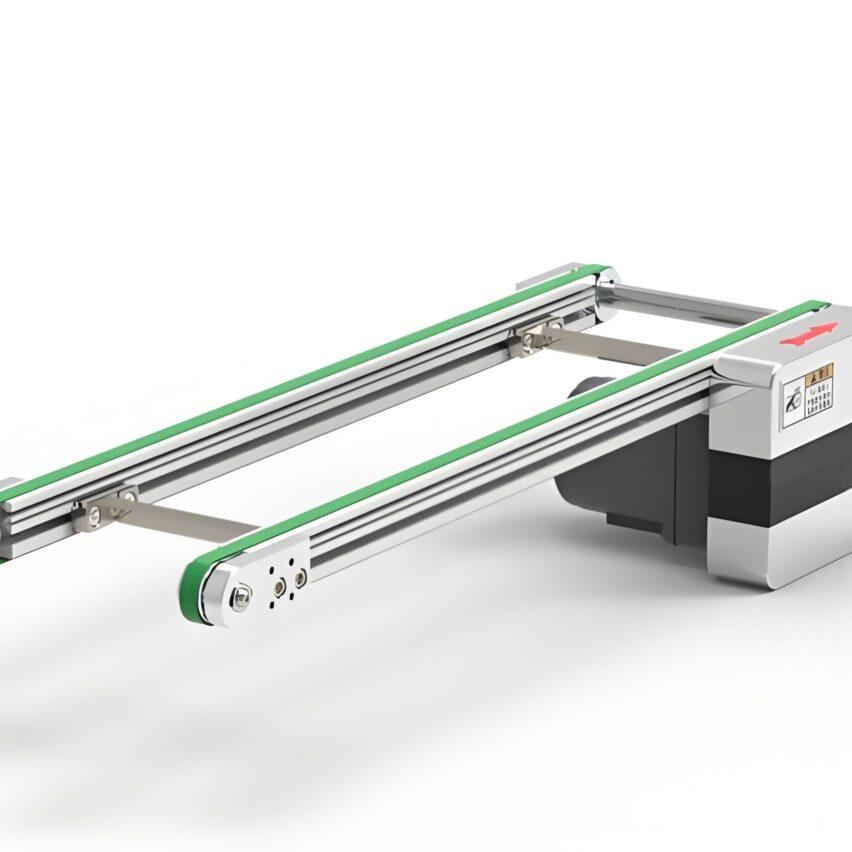Conveyor line deflection is one of the most troublesome failures in factories - minor material spills, production stoppage and rectification, and serious belt tearing, causing safety accidents.More than 70% of line stoppages were caused by conveyor belt deflections.and after mastering the core adjustment laws.Repair time can be reduced to less than 30 minutesThe following practical skills are designed for novice production line operators. The following practical skills, designed for the production line operation of newcomers, after reading you can also quickly become a "bias adjustment expert".
First, why your conveyor line always run out of order? First read the 3 core laws
Equipment runaway is not accidental, behind is the inevitable result of the laws of mechanics. Understand these laws in order to pinpoint the problem:
- it's all right to run loose, but not to run tight: When the tension on both sides of the belt is unequal, the belt will always be biased towards thetensioning sideMove. It's like a tug of war, the one with the most strength always wins.
- run high but not low: If the roll supports are mounted unevenly, high at one end and low at the other, the belt will flow like waterOffset to higher ground.
- run after not before: If the installation position of the rollers is biased to the rear of the running direction, the belt will bebackward, as if the vehicle was being pulled backwards.
Beginner's Misconceptions Alert: Blindly tightening tension bolts or padding brackets? Re! First observe whether the running direction is in accordance with the three major laws, and then make targeted adjustments.
Second, 5 strokes fast reset skills, 0 cost to save the runaway belt
Tip 1: Roller Adjustment (10 minutes to results)
- operating mnemonic"Run right and move forward, run left and move back."
If the belt runs to the right at the head pulley, theMove the right bearing seat forward 1-2cmIf it runs to the left, move the left bearing housing forward. Adjust and run test, fine tune to centre. - artifact: Spanners, levels
- crux: Adjust no more than 3mm at a time to avoid overcorrection.
Technique 2: Instantaneous adjustment of the rollers (5-minute emergency)
Use this no-disassembly method when the load-bearing section runs out:
- Stand behind the belt in the direction of travel and observe the runout side (e.g. right side runout);
- Move the first roller on that side forward by an angle of 15°.(Equivalent to 1-2cm of forward movement);
- If the runout is severe.Continuous adjustment of 3-4 rollers, each fine-tuned by 5°.
theory: Moving the rollers forward is equivalent to giving the belt a thrust to the opposite side, similar to steering wheel steering.
Tip 3: Gravity deflection method (for heavy-duty conditions)
Runaway when the belt is full of material:
- Locate the rollerset in the runout position;
- Raise the runaway side roller support by 2-3cm..;
- The material's own weight generates a partial force.Automatically presses the belt back to the centreline.
effect: Suitable for bulk material conveying such as coal, ore, etc., the corrective response speed is improved by 50%.
Tip 4: Forced reset of vertical rollers (stubborn runaway nemesis)
For repeated runaway positions:
- Installation on the deflection side of the belt (e.g. left side)Vertical stop rollers.;
- The stopper rollers are in line with the belt edge70°-80° angle.;
- The belt pushes the vertical rollers to rotateReverse friction forces the belt back into alignment.
take note of: The vertical rollers need to be covered with rubber to avoid scratching the belt.
Tip 5: Tension force balancing (eradicating chronic runaway)
No-load normal but runaway under load? The tensioner is the culprit:
- hammer tensioning: Check that the counterweights are not jammed.Both sides of the wire rope need to be equal length.;
- Hydraulic tensioning: Pressure gauge testThe pressure difference between the two sides of the cylinder should be <5%.;
- screw tensioning: Synchronised rotation of both screws.Scale Error ≤ 2 cells.
Three, anti-running maintenance 3 key, save 60% maintenance fee
Adjustment is only a symptomatic treatment, and long-term prevention of bias needs to be combined with proactive maintenance:
| Maintenance actions | Operating frequency | Key indicators |
|---|---|---|
| Drum Roller Cleaning | 1 per class | Thickness of adhesive material≤1mm |
| Bracket levelling | 1 per month | Horizontal error ≤0.5mm/m |
| Connector Status Detection | 1 per quarter | Joint offset < bandwidth 2% |
Exclusive data: Downtime for conveyor line failures after implementation of this maintenance schedule in a cement plantFrom an annual average of 120 hours to 28 hours, maintenance costs dropped by 64%.
IV. Advanced automation programme (the secret to efficiency gains 40%)
For scenarios such as sorting centres and automated production lines, manual adjustments are far from sufficient:
- Intelligent deflection roller: Built-in inclination sensor.Automatic rotation 5°-15°Offset run-off;
- Laser alignment systems: Real-time monitoring of belt position with an accuracy of ±0.5mm;
- Pneumatic actuators: When runaway is detected, thePush out correction rollers in 0.3 seconds.
case (law): Success rate of code scanning in an express sorting centre after retrofitting cylinder push plate deviceJumped from 82% to 99%The cargo loss rate has decreased by 90%.
Write in the end: adjust the bias is not a metaphysics, is the precise mechanics of the game
An engineer with twenty years of experience once told me, "Conveyor belts are like water currents, always looking for the path of least resistance.". Every time you adjust the deviation, you are playing with friction, gravity and inertia. After mastering these laws, you will find - it is not brute force that makes the belt obediently centred, but a deep understanding of the language of mechanics.
The latest industry report states.Plants that use scientific deflection methods extend belt life by an average of 3.2 years.. Next time you are faced with a runout, you might want to observe it quietly for 10 seconds before picking up a spanner.













